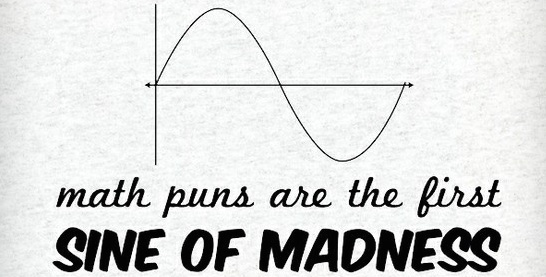Hi
everyone!
So today I thought we could play a math game! It's called "Which one doesn't belong?"
Objective:
There are four shapes/numbers/letters/graphs shown below; find a reason why each of the four (numbers) does not belong with the other three.
Rules:
1. Have fun!
2. Be
creative!
3. Try to
think outside of the box.
4. Your
thinking does not always have to be related to math!
------------------------------------------------------------------------------------------------
|
|
Take a
moment, and try to come up with your own guesses/rules for why 9 does not
belong with 16, 25, and 43.
|
My thoughts:
The digits that make up 16, 25 and 43 all add up to 7. (16=1+6=7; 25=2+5=7; 43=4+3=7). The digits of 9 do not equal 7, so it does not belong.
My mom's thoughts:
9 is the only single digit number!
Both answers are right because they both find a rule that groups 16, 25, and 43 together such that 9 does not belong in the group. Both answers are mathematical because they use math terminology such as "add", "number", "single", "digit(s)". And both answers discuss the different properties of numbers.
In my math teaching course, we were introduced to a website called "Which one doesn't belong?" (www.wodb.ca). It was created by a woman named Mary Bourassa who accepts entries, tests them to see if they fit the criteria, and then posts them on her website for people to solve.
I love this activity because of it's flexibility. This activity presents a puzzle for students to solve, using their prior knowledge and experiences to help them find patterns, create categories/groups, and form rules that each number must follow in order to be part of the group. It is also OPEN to possibility. As long as a student sees a pattern that can be proven, their answer is correct! This opens up the playing field for all students because there is no "right answer" or set formula that has to be followed to arrive at an answer. This game is about being creative, open-minded, and thinking outside of the box.
I tested this game out with my mom because I wanted to see if we would get any different answers by examining the problem from different perspectives. My mom used to be a banker, so she is very good with numbers, but she doesn't study math as a hobby. This offered a new perspective because she thought in terms of the operations (addition, subtraction, multiplication, etc.) between numbers, while I tried to find patterns between the digits of a number. We tried three different "Which one doesn't belong?" puzzles, and I found that sometimes we came up with the same rule or category for a group, while other times, we had completely different responses! I think this would be a great activity to do with a class as a warm up exercise because it allows the teacher to perform a quick diagnostic assessment to see where students are at in their learning, but it is also a great opportunity for students to learn from each other and see that a puzzle can have multiple solutions.
As an expansion, I thought that it might be a fun challenge for students to try to make their own "Which one doesn't belong?" puzzle, and either share it with their classmates to solve, or e-mail it to Mary Bourassa. If it is solvable and Ms. Bourassa is able to test it successfully, then it may be published on her website for other people from around the world to solve. How cool would that be?
That's it for now! I hope everyone has a great weekend!

Dayna


Hey Dayna!
ReplyDeleteThe site wodb.ca was my favourite part of the week as well! I loved it so much because, like you said, it's presented as an open ended question. Students are able to come up with any answer that they can think of and as long as they are able to justify it, they will always be right! I think that's such an important thing in the subject of math because so many people are afraid of attempting to answer a question or to share their thoughts because they lack the confidence. If a teacher were to introduce this to their classrooms, I think it would definitely help boost the confidence of their students! And the more confident students are, the more likely they are to be interested and engaged in course material!
Also, I love how you tried it out with your mom - so did I! The only difference is that my mom is a court reporter so she specializes in things like spelling and grammar. So it's safe to say we had very different answers. However, like you mentioned, she was able to justify it, so she was still right.
Lastly, I loved your idea about the class coming up with their own puzzle and submitting it to the website! It would be such a cool collaborative activity for the students to get excited about!
Heather
PS. I love the math pun.
Hi Dayna,
ReplyDeleteI really liked how you compared your thoughts with your mom's on why the 9 does not belong because it shows the diversity in people's thinking, which is something we as teachers really need to focus on and understand in our students. I also thought your idea for an expansion was awesome! I feel like students would feel very accomplished having their own "Which one Doesn't Belong" problem posted on a website, which could really boost their confidence in math. Thanks for sharing!
Karlee